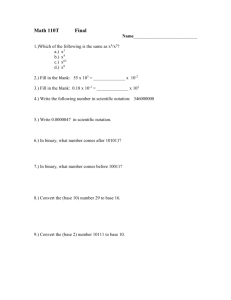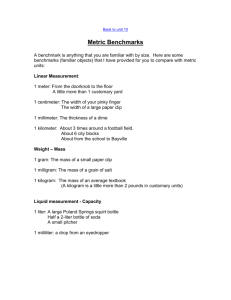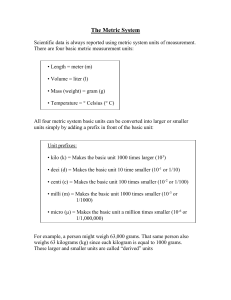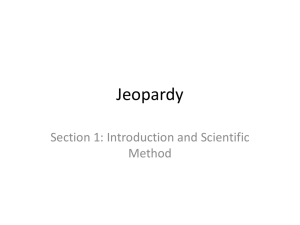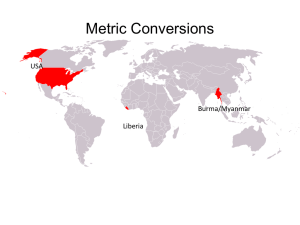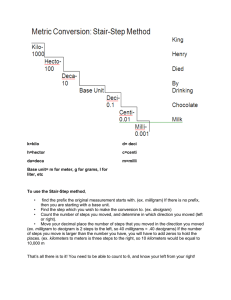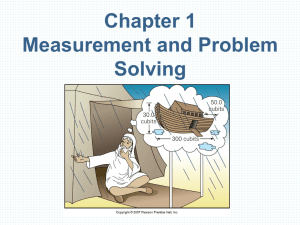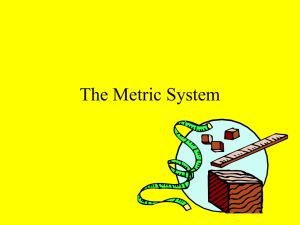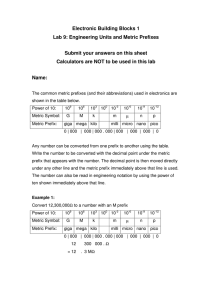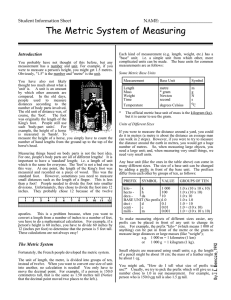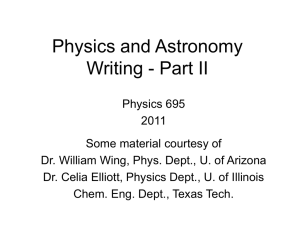Intro to Chemistry Math Worksheet
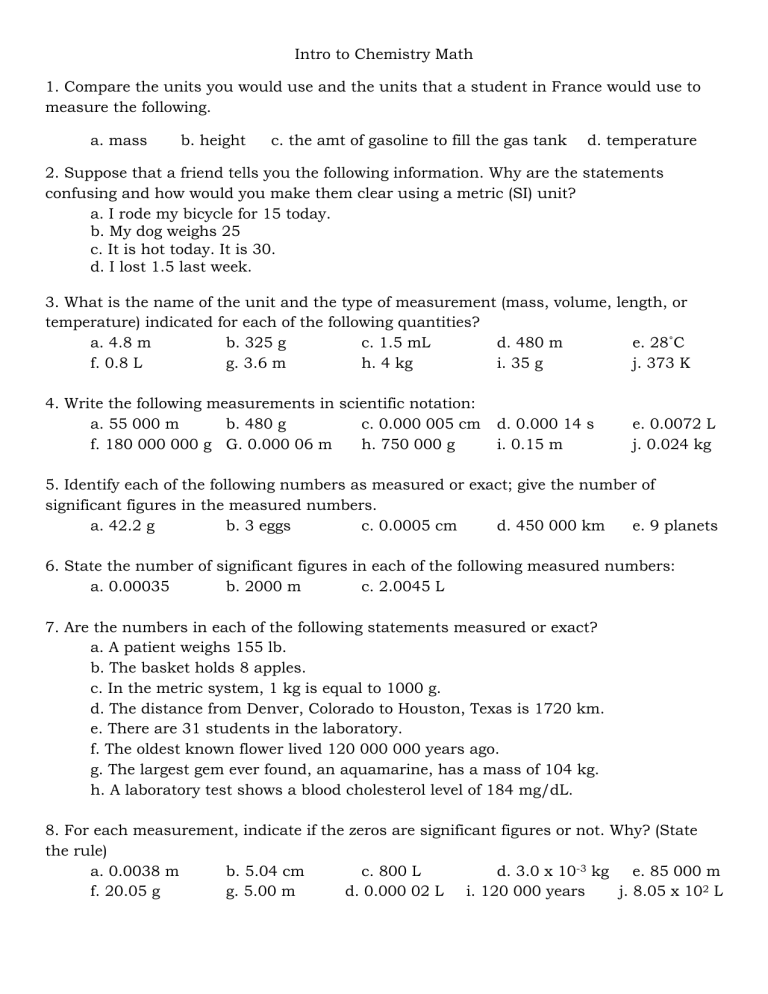
Intro to Chemistry Math
1. Compare the units you would use and the units that a student in France would use to measure the following. a. mass b. height c. the amt of gasoline to fill the gas tank d. temperature
2. Suppose that a friend tells you the following information. Why are the statements confusing and how would you make them clear using a metric (SI) unit? a. I rode my bicycle for 15 today. b. My dog weighs 25 c. It is hot today. It is 30. d. I lost 1.5 last week.
3. What is the name of the unit and the type of measurement (mass, volume, length, or temperature) indicated for each of the following quantities? a. 4.8 m b. 325 g c. 1.5 mL f. 0.8 L g. 3.6 m h. 4 kg
4. Write the following measurements in scientific notation: a. 55 000 m b. 480 g f. 180 000 000 g G. 0.000 06 m d. 480 m i. 35 g c. 0.000 005 cm d. 0.000 14 s h. 750 000 g i. 0.15 m e. 28˚C j. 373 K e. 0.0072 L j. 0.024 kg
5. Identify each of the following numbers as measured or exact; give the number of significant figures in the measured numbers. a. 42.2 g b. 3 eggs c. 0.0005 cm d. 450 000 km e. 9 planets
6. State the number of significant figures in each of the following measured numbers: a. 0.00035 b. 2000 m c. 2.0045 L
7. Are the numbers in each of the following statements measured or exact? a. A patient weighs 155 lb. b. The basket holds 8 apples. c. In the metric system, 1 kg is equal to 1000 g. d. The distance from Denver, Colorado to Houston, Texas is 1720 km. e. There are 31 students in the laboratory. f. The oldest known flower lived 120 000 000 years ago. g. The largest gem ever found, an aquamarine, has a mass of 104 kg. h. A laboratory test shows a blood cholesterol level of 184 mg/dL.
8. For each measurement, indicate if the zeros are significant figures or not. Why? (State the rule) a. 0.0038 m f. 20.05 g b. 5.04 cm c. 800 L d. 3.0 x 10 -3 kg e. 85 000 m g. 5.00 m d. 0.000 02 L i. 120 000 years j. 8.05 x 10 2 L
9. How many significant figures are in each of the following measured quantities? a. 11.005 g b. 0.000 32 m c. 36 000 000 km d.1.80 x 10 4 g e. 0.8250 L f. 30.0˚C g. 20.60 mL h. 1036.48 g i. 4.00 m j. 20.8˚C k. 60 800 000 g l. 5.0 x 10 -3 L
10. Round off each of the following numbers to three significant figures. Round them to two significant figures. a. 35.7823 m b. 0.002627 L c. 3826.8 g
11. Complete the following list of metric equalities: a. 1 L = _______ dL b. 1 km = _______ m d. 1 cm3 = ______ mL e. 1 kg = ________ g d. 1.2836 kg c. 1 m = __________cm f. 1 mL = __________ L
12. The speedometer in the margin is marked in both km/h and mi/h or mph. What is the meaning of each abbreviation?
13. How does the prefix kilo affect the gram unit in kilogram?
14. How does the prefix centi affect the meter unit in centimeter?
15. Write the abbreviation for each of the following units: a. milligram b. deciliter c. kilometer d. kilogram
16. Write the numerical value for each of the following prefixes: a. cm b. kilo c. milli d. deci e. microliter f. deka
17. Write the complete name (prefix + unit) for each of the following numerical values: a. 0.10 g b. 0.001 g c. 1000 g d. 1/100 g e. 10 2 g
18. Complete the following metric relationships: a. 1 m = _______ cm b. 1 km = ______m c. 1 mm = _______m d. 1 g = ____mg e. 1 kg = _______g f. 1 mL = ______L g. 1 g = _______kg h. 1 L = ____mL
19. For each of the following pairs, which is the larger unit? a. milligram or kilogram b. milliliter or microliter c. cm or km
20. For each of the following pairs, which is the smaller unit? a. centimeter or millimeter b. mg or g c. hm or mm d. kL or dL d. mL or dL
